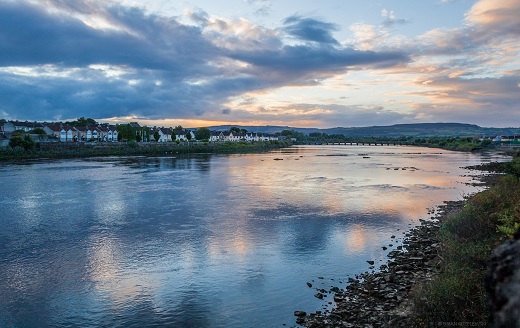DECLINING water quality across Clare will be addressed in a new draft plan for the management of river basins, councillors have been told.
An overview of the process of creating a new plan for the period 2022 to 2027 was presented at a meeting of the council’s committee on Physical Development last week.
Community Water Officer for the South West, Ruairí Ó Conchúir outlined how views are being sought across the county which will feed into a national plan for protecting Ireland’s water bodies.
Outlining the situation in this county, Mr Ó Conchúir noted that the percentage of ‘high status’ waterways here have fallen from 14% to 3% between 2013 and 2018. In addition, the number of water bodies rated as being in poor condition also increased by a third since 2017
“We have seen improvements in the worst of the worst, and decline in the best of the best,” he said. He added that the biggest pressures on rivers included agriculture, wastewater, hydro morphology and forestry.
The draft plan for the next six years is currently at the public consultation phase, but the pandemic has put paid to a series of public meetings planned for Clare in the coming weeks. Virtual consultations will now take place with a view to finalising the plan in 2002.
The work is being coordinated across the country by the Local Authorities Water Programme (LAWPRO) and Mr Ó Conchúir is one of 13 officers of the organisation which is headquartered in Clonmel. “I work across Clare, Limerick and Tipperary and work to connect groups in catchment areas,” he outlined. “For example, I’ve worked with groups around Tulla, Lisdoonvarna and the Shannon Town Community Wetlands Project.”
Mr Ó Conchúir also outlined how the forthcoming plan relates back to the EU-wide Water Framework Directive (WFD) which requires that blueprints for water protection be drawn up every six years. “Public participation is key,” he told the meeting.
Thanking Mr Ó Conchúir for his presentation, Councillor Alan O’Callaghan said the information was important to understand. “I would like to sit down and digest the detail,” he said. “This is very, very important.”
He asked Mr Ó Conchúir about the pressure created by forestry on water quality.
“At certain times, I see a lot of resin on the top of waters,” he said. “What’s the effect of this on the water quality if it’s physically visible. Does this affect fisheries? From talking to older people, there seems to be less fish. The waters that were full of fish don’t have them now.
“Irish Water have a huge role to play. We know there’s raw sewage. How much is Irish Water being pulled in to tidy up their act where systems need to be installed and upgraded?”
Chairperson of the committee, Councillor John Crowe added concerns about the O’Garney River in Sixmilebridge. “I’ve lived alongside a river all my life,” he said. “In the local river, there’s a green plant that grows on it every year. Has that anything to do with water quality?”
Responding to councillors’ questions, Mr Ó Conchúir said that green growth could be natural or enriched. “If it’s encroaching on the river, that’s a definite sign of enrichment,” he said.
In respect of Councillor O’Callaghan’s concerns, he said plantations are having an impact.
“A lot of East Clare has significant pressure from forestry,” he said. “During clear felling operations, there is increased silt in the river and increased things that we don’t want getting into the river.”
Mr Ó Conchúir siad he had worked for the Inland Fisheries for a number of years on the Lower Shannon. “Definitely in the smaller nursery streams, the impact of all of the pressures, especially land drainage, has impacted,” he said.
“We really want to avoid contamination of drinking water in East Clare and South East Clare,” Councillor O’Callaghan remarked.
More details of the virtual consultations are available at Lawaters.ie. Details of water quality in catchments across the country are on Catchments.ie.


